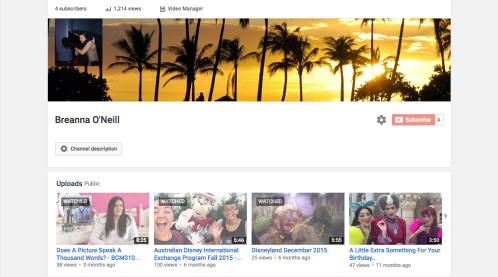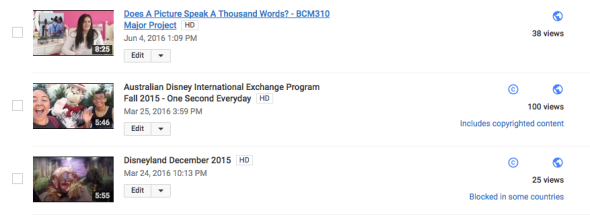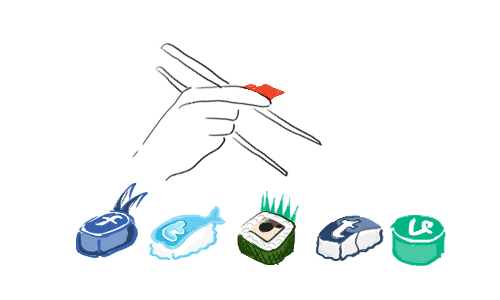If you haven’t quite gathered it yet, I love the internet. Well, I love MOST of the internet. It has allowed me to learn more about things that have captured my interest (as well as those that haven’t.. thanks high school), maintain friendships that would otherwise not exist due to distance and time, keep up to date on the happenings of those that I love, and watch as many travel videos as I please in order to make myself feel like I’m constantly on the move. What a gem it has been in my life!
Sometimes, however, it likes to rain on my parade and be a hater just because of where I live, or where other people live. Regulations on media access via the internet have grown to become quite restrictive in relation to content that is able to be viewed or shared, particularly in Australia.
Let’s talk about YouTube as a prime example. Has anyone ever come across this screen?

If you haven’t, it probably means you live in the United States, but Australians down under will know where I’m coming from.
The fact of the matter is, for one reason or another, there are many videos published on YouTube that do not meet our country’s media regulation guidelines and therefore have been blocked to restrict consumption. The Australian Communication and Media Authority (ACMA) works alongside YouTube in ensuring content remains within the code of practice, however, this is not an easy job, particularly given that YouTube is a user-generated media platform.
Copyrighted media, such as music or film footage, is the key issue in relation to such regulation. YouTube’s Terms of Service explicitly outline their position on this matter –
You further agree that Content you submit to the Service will not contain third party copyrighted material, or material that is subject to other third party proprietary rights, unless you have permission from the rightful owner of the material or you are otherwise legally entitled to post the material and to grant YouTube all of the license rights granted herein.
Furthermore, The YouTube community guidelines again relay this notion in stating –
Respect copyright. Only upload videos that you made or that you’re authorized to use. This means you can’t upload videos you didn’t make, or use content in your videos that someone else owns the copyright to, such as music tracks, snippets of copyrighted programs, or videos made by other users, without necessary authorizations.
This means that any video that uses over 10 seconds of a song that isn’t under a Creative Commons License will be given restricted access or be removed from the site altogether. So pretty much, if it’s copyrighted, don’t use it. However, amateur YouTube users (much like you and me) who wish to publish content online for the enjoyment of ourselves and others in our immediate circle are therefore restricted in what we can and can’t post. For example, below is my YouTube Channel.

I have a total of nine videos, with six of these being university related posts. This is a snapshot of my creator studio, where you’ll see that 2 of my latest 3 videos have alerts on them, either for copyrighted content or a blocked notice.

Looking into this further on the last video, the alert has come as a result of my music choice for the video. As a result, it has been blocked in a number of countries. And this is merely a video I made for fun with footage taken on a trip in 2015. Imagine what kind of censorship exists in relation to ACTUAL content that may raise issues that are controversial in society.

The internet has widened the possibility for media access for the everyday individual, but regulations and censorship guidelines that have grown in light of this greater access has meant that Australians are needing to find alternative routes to access the same content as the rest of the world. VPN service providers which change the location of your computer in the eyes of the internet, routers, and piracy websites have become common practice, just ask my media class. In fact, studies have shown that Australians are twice as likely as Brits to pirate content from the internet.
At the end of the day, all we want to do is be able to access the same content at the same time as the rest of the world. Copyright breaches? Fair enough, but restrictions because of internal disagreements between networks and internet providers meaning we can’t access content? Not cool.

Reference List –
Australian Interactive Media Industry Association 2007, Review of Restricted Access System Declaration 2007, AIMIA Digital Policy Group, available from <http://www.acma.gov.au/~/media/Online%20Content/Issue%20for%20comment/June%202014/AIMIA%20-%20Review%20of%20Restricted%20Access%20System%20Declaration%202007%20FINAL%20pdf.pdf>.
Bajde et al. 2015, ‘Back to Consumption and Production? Prosumers Negotiating The WMG Lockdown on YouTube’, Journal of Consumer Behaviour, vol. 14, no. 5, pp. 296-306.
Breanna O’Neill 2016, Youtube Channel, available from <https://www.youtube.com/channel/UCYWei0zwpwfrjktZqxd-ORw>.

[…] Breanna explored the problems associated with being geoblocked from video content in Australia and music use, […]